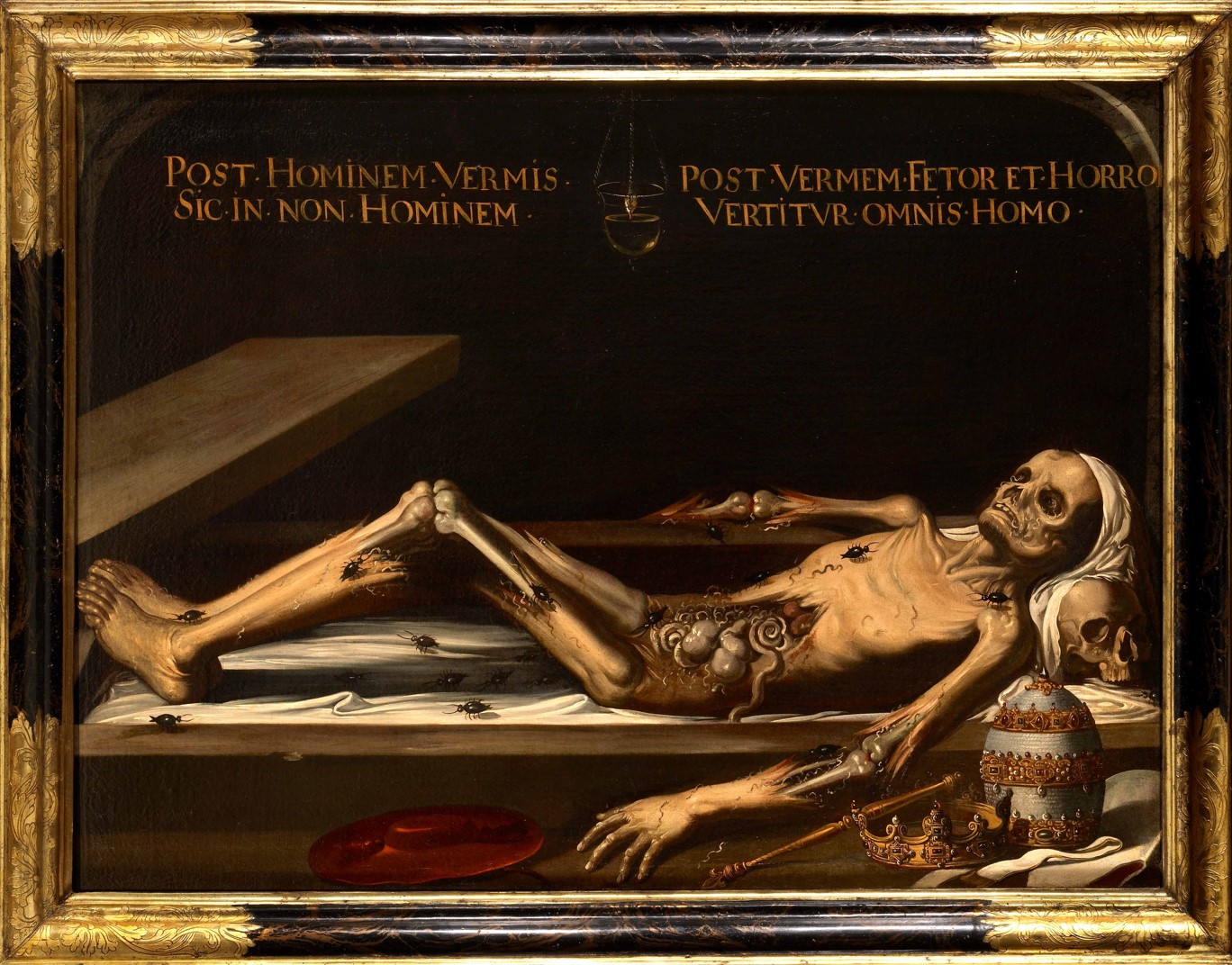
Vanitas
Juan de Valdés Leal
17th century, Oil on canvas
This work can be linked to several Spanish examples from the late 17th century, first and foremost to the two large canvases by Juan de Valdés Leal in the church of the Hospital de la Caridad in Seville, in which the ephemeral condition of all men is similarly represented; with the papal tiara, the bishop's cap, the sceptre, and the crown symbolizing the disillusionment with earthly glory. The Latin inscription, painted in gilded block letters, is taken from the Meditationes de cognitione humanae conditionis by Bernard of Clairvaux in which the saint, expressing himself in simple verse (Nihil aliud est Homo quam Sperma fetidum, Saccus Stercorum, Cibus Vermium), reminds man of his miserable condition on earth, and the promise, for men of faith, of a glorious eternal life in heaven. This imago mortis therefore appears to be an admonition and an invitation to faith and is part of the tradition of Vanitas that we already find in Palermo in the 15th century in the Triumph of Death, a fresco painted by an unknown, probably French or Catalan, painter on the wall of a hospital, and which is perhaps the most famous example of this genre.

